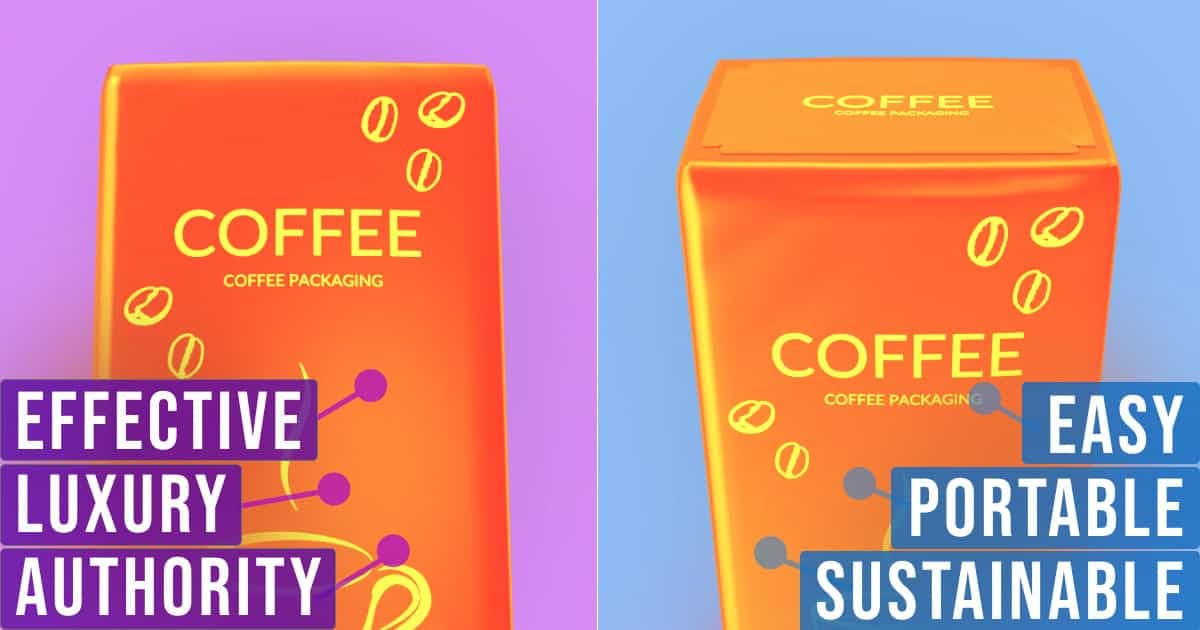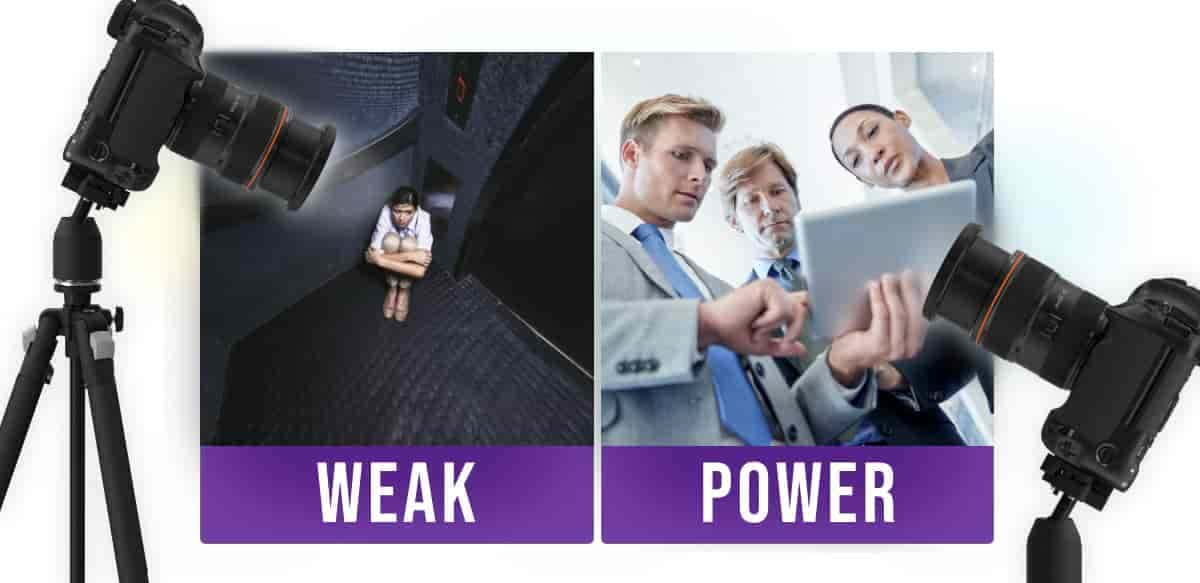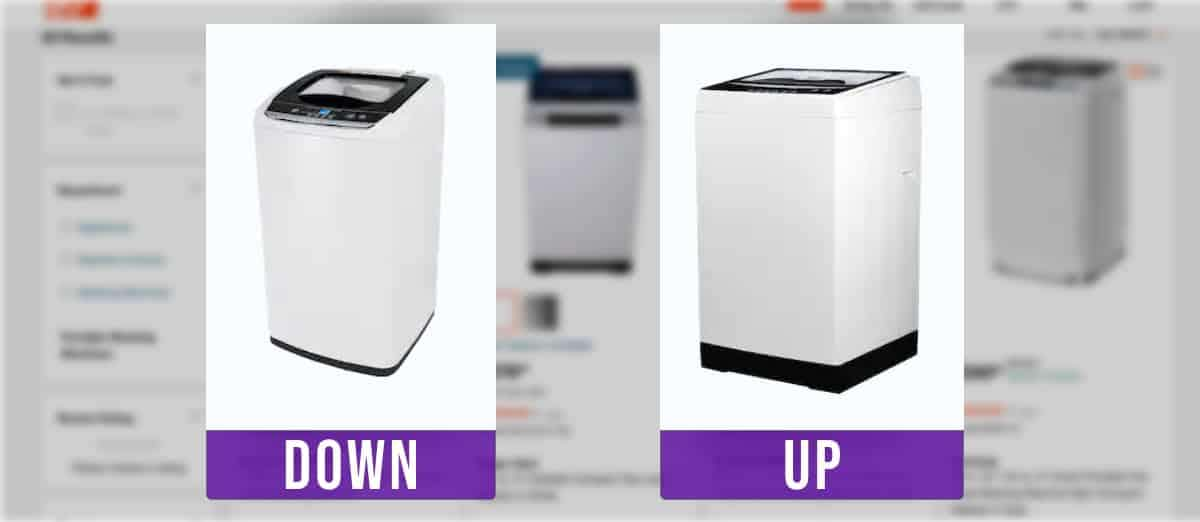Choose the Best Vertical Angle for Product Images
What's the optimal angle for a product image? Why does it matter?

Overview
What's the optimal angle for product images?
It depends. Do customers want:
- ...a powerful product?
- ...to feel powerful?
Consider movies.
Upward angles convey power.
Downward angles convey a lack of power.

Products seem powerful with upward angles. Even mundane products like white rice (Van Rompay et al., 2012).
So upward angles must be better, right?
Not necessarily. Sometimes you can boost sales by depicting products in a weaker light because it shifts power toward the customer.
For example, customers prefer downward angles of anthropomorphic products because it feels like they're looking down at this entity from a high location, which makes them feel dominant over it (Xuan, Chen, Lin, & Huang, 2023).
So which angles are better for which products?
Downward Angles:
- Easy to Use. Products will seem easier to control (e.g., self-assembly)
- Portable. Products will seem lighter or smaller (e.g., travel kits)
- Sustainable. Products will seem soft or natural (e.g., cleaning solution)
Upward Angles:
- Effective. Products will seem powerful (e.g., lotion)
- Luxury. Products will seem high status (e.g., handbag)
- Experts. Products (or people) will seem authoritative (e.g., influencer)
Consider these listings for a portable washing machine.

Most customers want portability.
In the downward angle, customers feel like they're looking down at the machine. So it feels smaller (and thus portable). Exactly what their brain is seeking.
Customers who want a powerful machine would be drawn toward the machine with an upward angle because their brain is monitoring for traits that convey power.
Why It Works
As children, we look up at adults who exert power over us.
Two concepts — UP and POWER — repeatedly fired together in our brain, binding these two ideas. Today, activating one concept will activate the other (see The Tangled Mind).
And these ideas are reinforced every day. Look down. You'll probably see objects that you can grasp, manipulate, and control.
Other Takeaways
- Works With Any Location. It occurs with products on a low or high shelf. Or the location on a webpage.
- Applies to People. Subjects look better when photographed from above, but this angle might sacrifice their perceived authority and expertise.
- Use Slight Upward Angles. Don't overdo it. Products are typically viewed from above, so downward angles will be more familiar. Keep any angles within the confines of a typical viewpoint.
Other New Studies
- Wikipedia Influences Legal Verdicts - Researchers found that judges are more likely to cite previous cases as precedent if there's a Wikipedia article written about the case. And those judgements share similar wording from the articles.
- Cross-Race Effect in Movies - Movies perform worse in foreign markets when lead actors look similar to each other. Foreign audiences struggle to distinguish and remember them.
- Grateful People Are Less Bored - Gratitude fuels a sense of meaning in life, which suppresses boredom.
